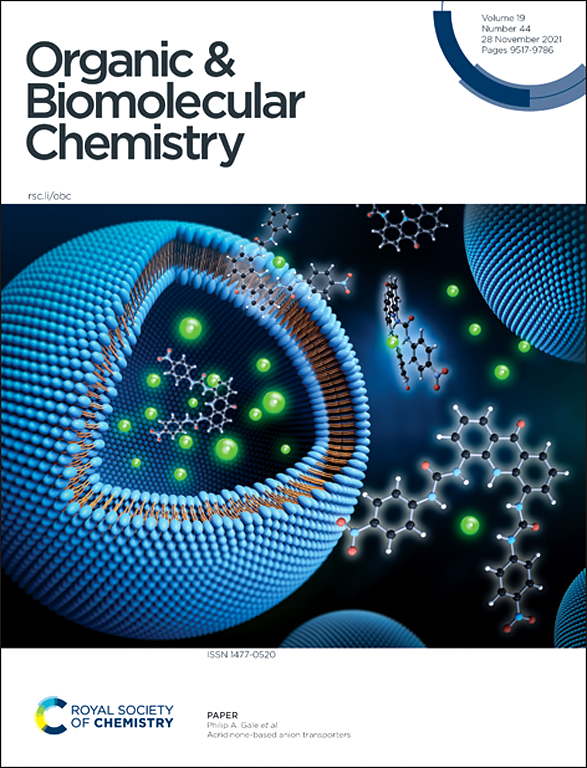NHC-catalysed synthesis of hydroxy methylene-bridged formyl-di-xylofuranose: access to tetrakis and spiro tricyclic xylofuranose.
IF 2.9
3区 化学
Q1 CHEMISTRY, ORGANIC
引用次数: 0
Abstract
Herein, the role of N-heterocyclic carbenes (NHC) as a Brønsted base in the transformation of xylofuranose aldehyde has been explored. Furanose aldehyde undergoes intermolecular self-condensation catalyzed by thiazolium-derived carbene, producing hydroxy methylene-bridged formyl-di-xylofuranose retaining the C-4 aldehyde. Furthermore, modification of the hydroxy methylene-linked disaccharide yields spiro[furano-4,5-pyrano[3,2-b]furanose] and oxy-methylene-bridged di-formyl-xylofuranose cyclic tetrasaccharide.
求助全文
约1分钟内获得全文
求助全文
来源期刊

Organic & Biomolecular Chemistry
化学-有机化学
CiteScore
5.50
自引率
9.40%
发文量
1056
审稿时长
1.3 months
期刊介绍:
Organic & Biomolecular Chemistry is an international journal using integrated research in chemistry-organic chemistry. Founded in 2003 by the Royal Society of Chemistry, the journal is published in Semimonthly issues and has been indexed by SCIE, a leading international database. The journal focuses on the key research and cutting-edge progress in the field of chemistry-organic chemistry, publishes and reports the research results in this field in a timely manner, and is committed to becoming a window and platform for rapid academic exchanges among peers in this field. The journal's impact factor in 2023 is 2.9, and its CiteScore is 5.5.
 求助内容:
求助内容: 应助结果提醒方式:
应助结果提醒方式:


